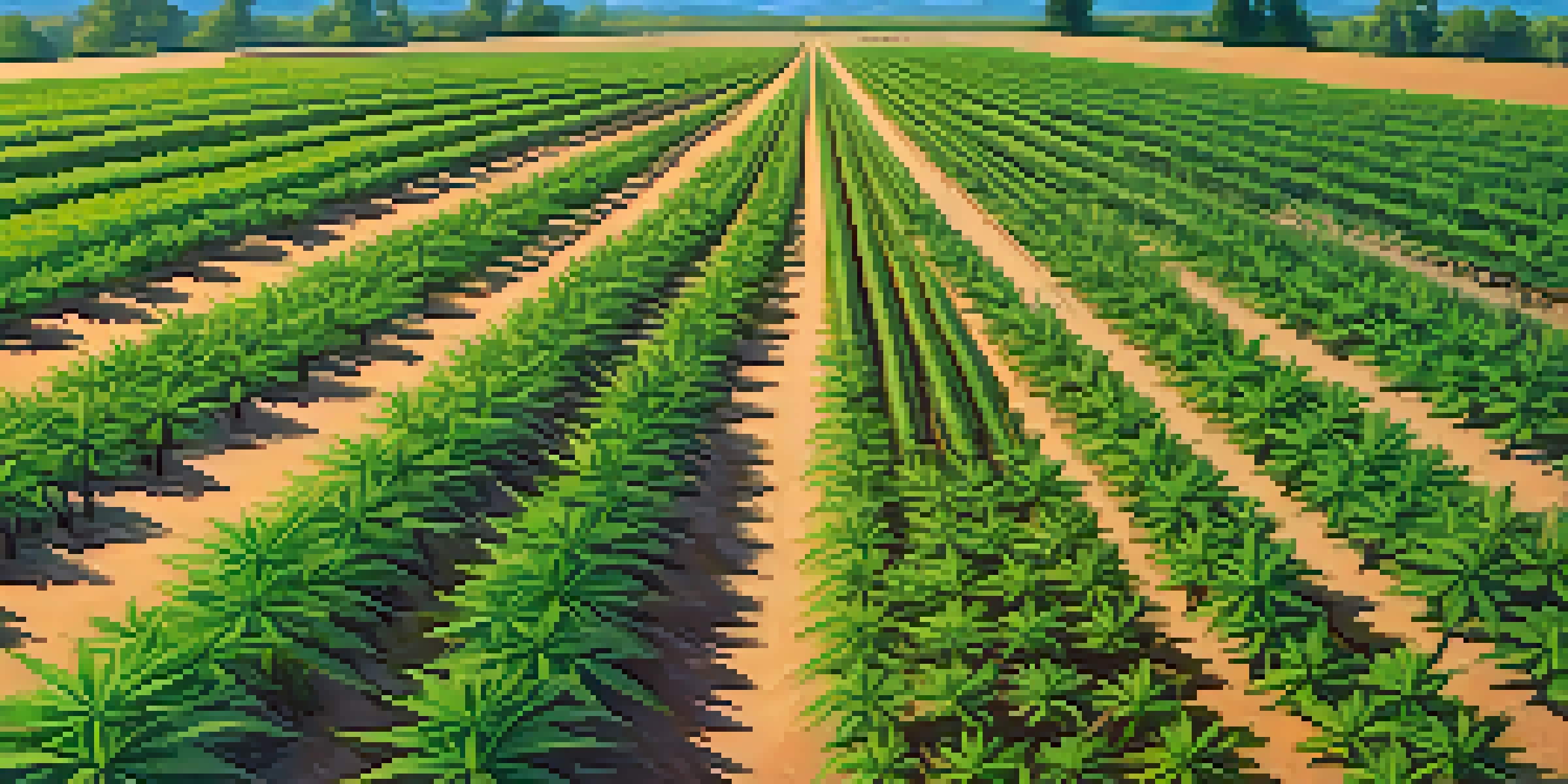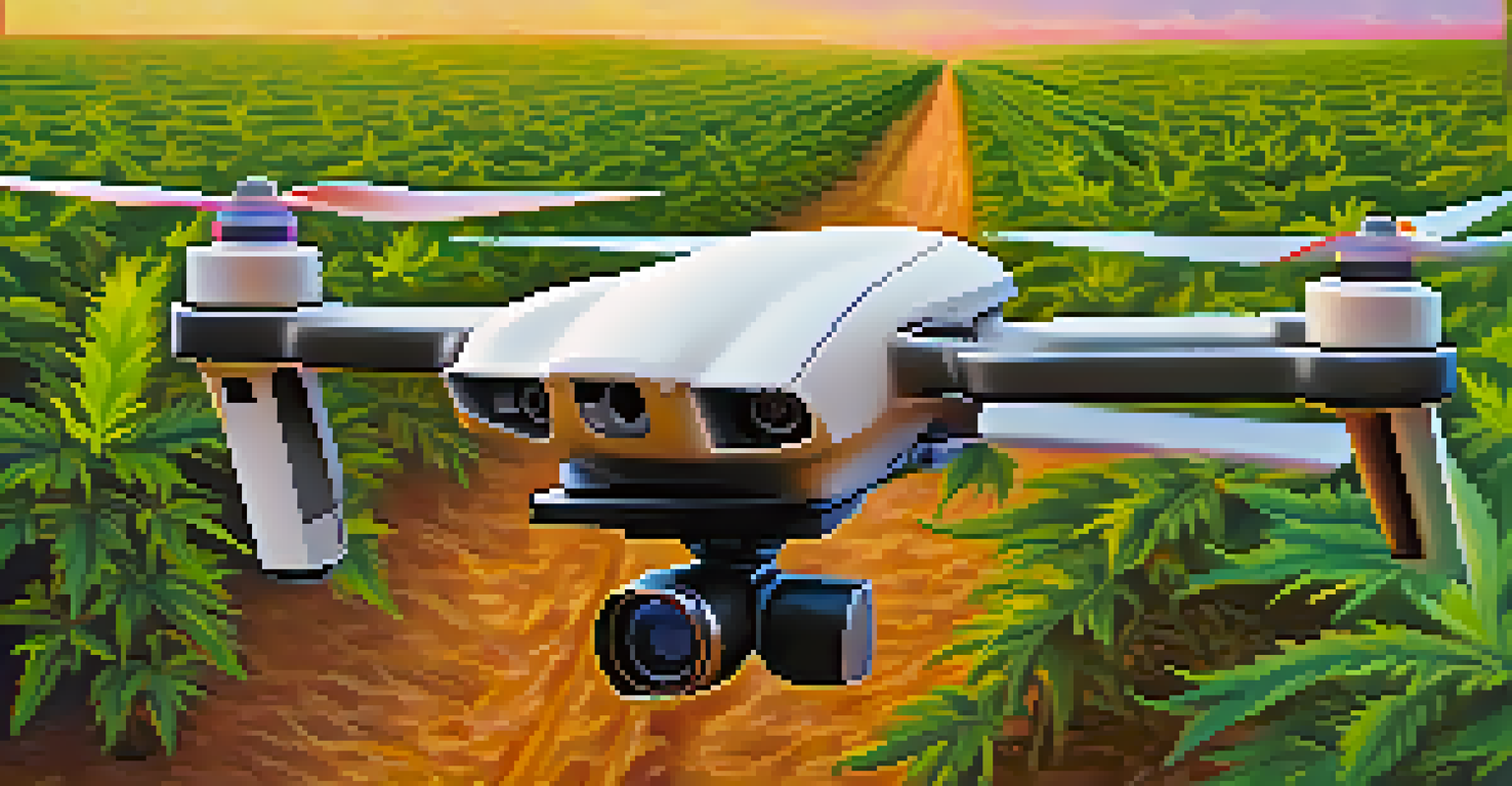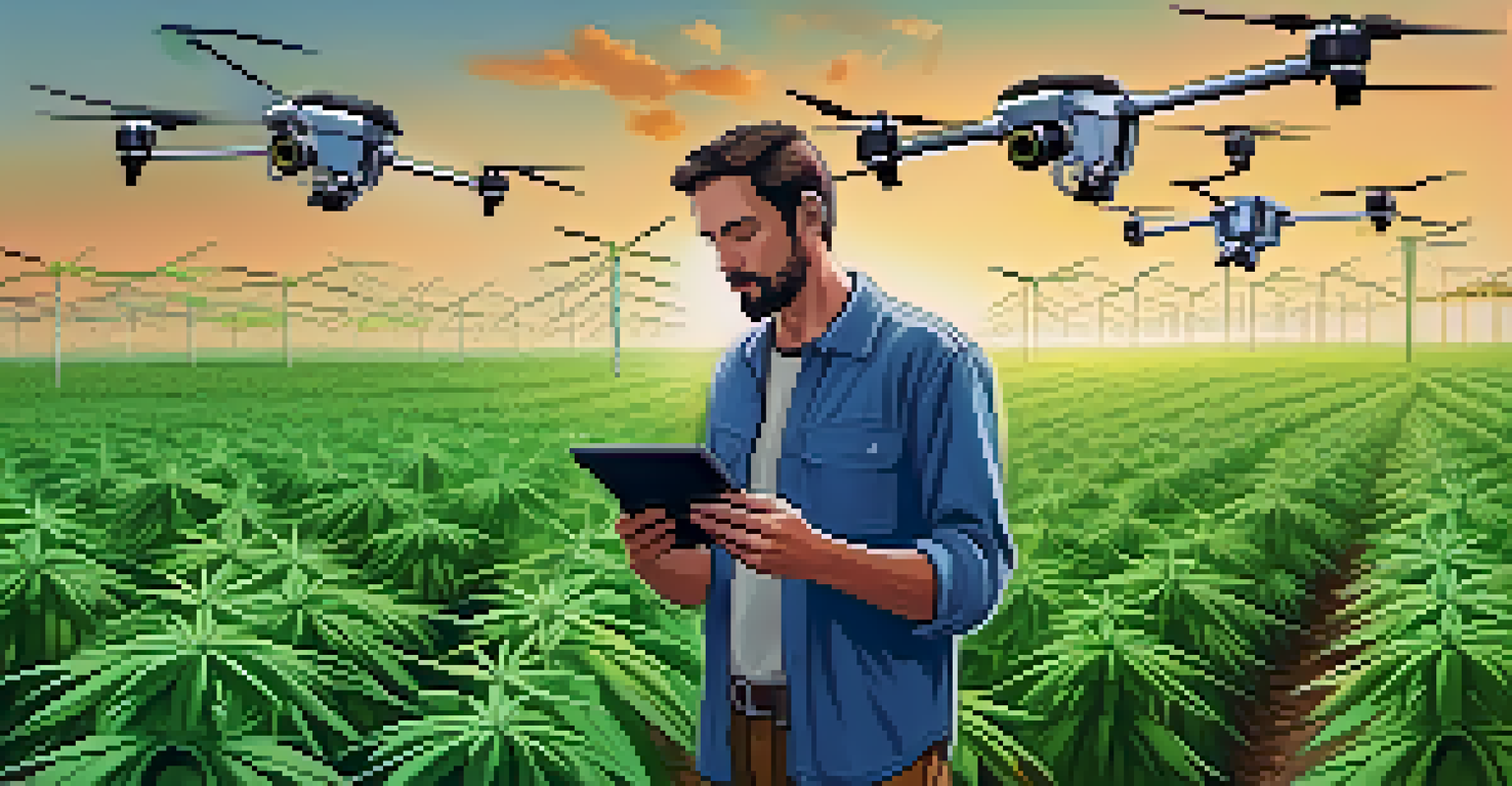The Impact of Drones on Cannabis Farm Management

Understanding the Role of Drones in Agriculture
Drones have become a game changer in modern agriculture, particularly in cannabis farming. They allow farmers to monitor large plots of land quickly and efficiently, offering a bird’s-eye view that was once only possible through helicopters or planes. With their ability to capture high-resolution images and data, drones help farmers make informed decisions about their crops. This technology is not just a trend; it's reshaping how we think about farming practices.
Drones are revolutionizing agriculture, providing farmers with unprecedented insights and efficiency.
These flying machines can be equipped with various sensors, enabling them to gather data on plant health, soil conditions, and even pest infestations. For cannabis farmers, this means they can identify issues early on, preventing potential crop losses. By integrating drone technology into their operations, farmers enhance their ability to manage resources effectively, ultimately boosting yields and profits.
As the cannabis industry continues to grow, the adoption of drones is likely to expand. Many farmers are realizing that using drones not only saves time but also reduces labor costs associated with traditional monitoring methods. This shift towards precision agriculture is paving the way for more sustainable practices, which is essential in today's environmentally conscious market.
Enhancing Crop Monitoring with Drone Technology
One of the most significant advantages drones offer is the ability to enhance crop monitoring. By flying over fields, drones can provide real-time insights into the health of cannabis plants, allowing farmers to spot areas that need attention. This proactive approach means that farmers can address potential problems before they escalate, resulting in healthier crops and higher yields.

For instance, thermal imaging cameras attached to drones can detect temperature variations in the soil and plants. Such data enables farmers to tailor their irrigation strategies more accurately, ensuring that each plant receives the right amount of water. This not only conserves water but also promotes optimal growth conditions, which is crucial for cannabis cultivation.
Drones Transform Cannabis Farming
Drones provide farmers with efficient monitoring and data collection, enhancing crop management and decision-making.
Moreover, drones can conduct regular aerial surveys, which help in tracking the progress of plants as they grow. By comparing data over time, farmers can identify trends and adjust their cultivation practices accordingly. This level of insight helps cannabis growers make data-driven decisions, ultimately leading to improved crop quality and profitability.
Optimizing Resource Management with Drones
Resource management is a critical aspect of cannabis farming, and drones excel in optimizing this area. With the ability to assess soil moisture levels and nutrient distribution, drones help farmers apply resources like water and fertilizers more efficiently. This targeted approach not only saves money but also minimizes environmental impact, making cannabis farming more sustainable.
The future of farming lies in the ability to harness technology for sustainable practices.
For example, when drones identify dry patches in a field, farmers can focus their irrigation efforts specifically on those areas. This targeted watering strategy conserves water and ensures that plants receive adequate hydration. Additionally, by analyzing nutrient levels in the soil through drone data, farmers can customize their fertilization plans, which enhances plant health and growth.
Incorporating drones into resource management strategies allows cannabis farmers to streamline their operations. By reducing waste and improving the effectiveness of inputs, farmers can achieve better yields while maintaining a commitment to sustainable practices. This balance is essential in a market that values quality and environmental responsibility.
Streamlining Pest and Disease Management with Drones
Pest and disease management is a significant challenge in cannabis farming, but drones offer innovative solutions. Equipped with advanced imaging technology, drones can detect signs of pest infestations or diseases before they become widespread. This early detection is vital for minimizing damage and protecting crop yields.
For instance, multispectral cameras can analyze plant health and highlight areas affected by pests or diseases. Farmers can then take targeted action, such as applying pesticides or fungicides only where needed, rather than treating the entire field. This not only saves money but also reduces chemical usage, aligning with sustainable agricultural practices.
Enhanced Pest Management Techniques
Advanced drone imaging allows for early detection of pests and diseases, enabling targeted interventions that protect crop yields.
Furthermore, drones can assist in monitoring the effectiveness of pest control measures. By conducting follow-up aerial surveys, farmers can assess whether their interventions are working, allowing for timely adjustments. This proactive approach to pest management leads to healthier cannabis plants and a more successful harvest.
Improving Harvesting Efficiency with Drone Assistance
Harvesting cannabis is a labor-intensive process, but drones can significantly enhance efficiency. By utilizing drones equipped with imaging technology, farmers can determine the optimal time for harvest by assessing plant maturity and cannabinoid content. This data-driven approach ensures that crops are harvested at their peak, maximizing quality and potency.
Additionally, drones can help in mapping out cannabis fields to streamline the harvesting process. By providing detailed layouts, drones allow farmers to plan their operations more effectively, reducing the time and labor required during the harvest. This optimization can lead to a smoother workflow and ultimately a more successful harvest.
Moreover, drones can assist in post-harvest assessments by surveying the field to identify any leftover plants or areas that need attention. This comprehensive approach ensures that farmers can manage their fields efficiently, setting the stage for future planting cycles. Overall, drone technology plays a crucial role in enhancing the entire harvesting process.
Facilitating Compliance and Reporting with Drone Data
In the highly regulated cannabis industry, compliance is paramount, and drones can assist in meeting regulatory requirements. By providing accurate aerial data, drones help farmers document their practices and ensure they adhere to local laws and regulations. This not only helps in maintaining compliance but also builds trust with consumers and regulatory bodies.
For example, drone imagery can be used to create detailed reports on crop health, pesticide usage, and growth patterns. This documentation is essential during inspections and audits, providing a clear record of farming practices. With such data at their fingertips, farmers can demonstrate their commitment to responsible cultivation.
Streamlined Compliance and Reporting
Drones assist in documenting farming practices, ensuring compliance with regulations and fostering transparency in the cannabis industry.
Furthermore, the use of drones can enhance transparency in the cannabis supply chain. By documenting every stage of cultivation, from planting to harvesting, farmers can provide consumers with insights into their products. This level of transparency is increasingly important in today’s market, where consumers are more informed and interested in the sourcing of their cannabis.
The Future of Drones in Cannabis Farming
As technology continues to advance, the future of drones in cannabis farming looks promising. Innovations in drone design and functionality are expected to enhance their capabilities even further. For instance, future drones may incorporate artificial intelligence (AI) to analyze data more efficiently and make recommendations based on real-time conditions.
Moreover, as the cannabis industry matures, we can anticipate increased adoption of drones by farmers of all sizes. Smaller operations that may have hesitated to invest in such technology could find affordable options, making drone usage more accessible. This democratization of technology will likely lead to widespread improvements in farming practices across the board.

Ultimately, the integration of drones into cannabis farming represents a shift towards more sustainable, efficient, and data-driven practices. As the industry continues to evolve, embracing innovations like drone technology will be essential for farmers looking to thrive in a competitive market. The future is bright for cannabis farmers who leverage the power of drones.